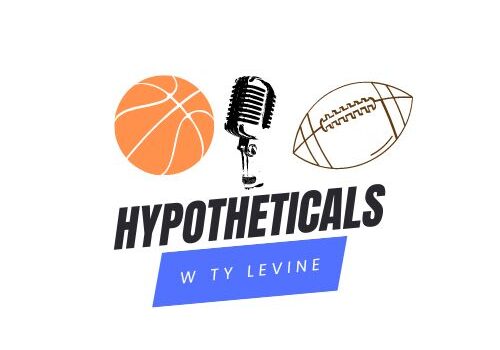Aaaaaand we’re back. It was a rough week for me in pretty much every facet of the word. It started with a concussion that I suffered last week, keeping me out of all my classes and preventing me from getting any work done or attending any classes. It continued when I watched (and I mean listened, as the concussion prevented me from looking at screens) in horror – albeit expected horror – as my wonderful New York Giants got obliterated by the powerhouse San Francisco 49ers on National television on Thursday night.
It continued on Saturday as I sat in the stands of FirstBank Stadium and watched another coaching disaster-class from Clark Lea as Vanderbilt was torched by the Kentucky… defense? Yeah, you heard me right: Defense. The Wildcats ran two interceptions back for touchdowns and brought a third inside the 10-yard line. AJ Swann went an abysmal 16-of-40 for 189 yards and 3 interceptions, and the Vanderbilt offense was absolutely nowhere to be found.
To make matters worse, my fantasy teams got TORCHED by Keenan Allen, Raheem Mostert and others who had absurdly productive statistical weeks. So, yeah, you could say I’m peeved off. In an effort to cool down, I’m going to come at you guys with a bit of a hateful piece, which brings me to my topic, an analysis of the running back.
No, this isn’t a praise towards the position. Nor is it a hot take. This is me using my MASSIVE platform on this blog to write an opinionated piece about the state of the position itself.
Perhaps no other position, in all of sports, is as dependent on others than the running back. Maybe hockey and soccer goalies need competent defenses to keep clean sheets, but the running back, in my eyes, is almost always going to rely heavily on the offensive line. When I make this point, I always reference the Dallas Cowboys’ offensive line during the 2010s. It was completely loaded with elite run-blockers, and as a result, America’s team had one of the most consistently dominant rushing attacks in the league. Truthfully, the line is still dominant and the rushing attack is still hyper-efficient.
Demarco Murray, Alfred Morris, Darren McFadden all had minimal success as lead backs throughout their entire careers, yet were dominant when given lead roles behind the Cowboys’ dominant front five. There are countless examples of runners shining behind elite lines. Le’veon Bell lacked any special, physical characteristics; he was not particularly fast, quick, strong, etc. He had a great feel for the game and a line that allowed him to patiently pick through the defense. They can make a bad running back look good, but more importantly, they can make good running backs look bad.
And, I mean bad.
We’ve seen what some of these superstar runners can do. Think about the flashes of potential we used to see from Saquon Barkley. Now think about how inefficient he was running the football behind the Giants’ joke of an offensive line. Alexander Marrison, the long-heralded handcuff for Dalvin Cook in Minnesota, has done nothing behind the Vikings’ abysmal line. Breece Hall has struggled to produce the explosive plays he produced last year behind the New York Jets’ injury-riddled front.
Then, there’s the injury situation. Running backs also take more contact than all other positions in the league, with many taking full force hits 20+ times a game, not to mention the blocking they are forced to do as well. It’s why so many rushers get hurt. Already this season, we’ve seen Nick Chubb, Saquon Barkley, Aaron Jones, Austin Ekeler, David Montgomery, Jonathan Taylor, and JK Dobbins go down for extended time. Those are some of the top guys at the position! It’s just an insanely fragile and dependent position, which brings me to my penultimate position.
Running backs are the least valuable position in football. Teams like the Eagles, that have invested low draft picks on running backs and spent the majority of its draft and free agency capital on other positions (like offensive line) have had the most successful rushing attacks of late. There’s no shortage of athletic running backs to snag in the late rounds of drafts. Just looking at 2017: Alvin Kamara was a third round pick, Jones a fifth, and Ekeler undrafted. Investing in the offensive line and finding running back value in the later parts of drafts is so much more conducive to organizational success.
And don’t even get me started on fantasy football: already three top-12 picks in Chibb, Barkley and Ekeler have gotten injured. I employ similar strategies in my fantasy drafts as the one I listed above. I go heavy on receivers early and wait until a little bit later to take my rushers. There is plenty of good value to be had in later parts of drafts. Devon Achane, Zack Moss and Kyren Williams are all now weekly starters in fantasy, and they were drafted in fantasy! Guys like James Cook, Brian Robinson and James Conner were around after the fifth round and are all extremely viable options to start, as well.
Whether real or fantasy, the running back position is overly dependent and extremely injury prone, making them extremely unpredictable. I will always advocate for a drafting approach that ‘fades’ the position.
That’s all for me, folks! If you made it this far, thanks for reading. Be sure to tune in to my shows this week! Scoreboards and Soundwaves runs every Monday from 11:00 a.m. to 12:00 p.m., and Anchor Talk (with superstar co-hosts Jack Morris and Owen Andreas) runs on Fridays from 2:00 to 3:00 p.m.








Comments